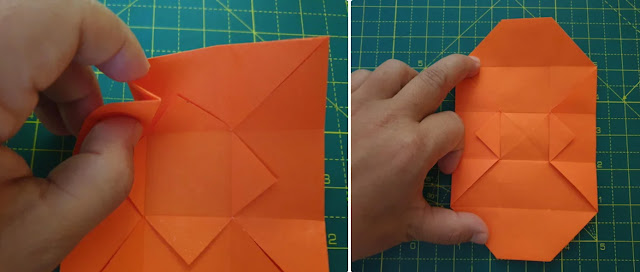The covid-19 situation is escalating to a full-blown crisis. (India). Amid extended lockdown/shutdowns and fear of health safety and job security, origami folding is keeping me and the kids in the house busy and distracted.
In this project, I'm sharing steps to fold a small tote handbag.
Things We Need
Place the origami paper on a flat surface and fold the square paper vertically in half like a valley. Crease it well by sharpening it with a fingernail and unfold it.
"This fold is known as Valley Fold because the crease is at the bottom and the paper is folded forward into itself, so that paper makes a "V shape" when unfolded"
Now, Valley Fold the paper vertically and unfold it.
The Center Fold
For this step hold one corner of your thumb and index finger. Pinch it gently so that the corner folds upward like a mountain.
"This fold is known as Mountain Fold because the crease sits at the top and the paper is folded behind itself, and the paper makes an "inverted V shape" when unfolded."
Repeat this step with all the corners. Sharpen the folds nicely and unfold. Place the paper flat on the surface and unfold the top and bottom sides. The left and the right sides will remain folded.
Snakes in the Box
Mountain fold along the Black line(Pic 1) and bring down the flap to lock in the folds. You can use glue to secure the fold.
We will now have a box-like structure(Pic 4) with two extruding parts. At this step, the bag will resemble two snakes peeping out of the box and looking in opposite directions.
Fold any one extruded side inside the box. Use glue to lock it firmly.
Now, if we look closely, we will note that the extruded part resembling a tringle stacked above a rectangle.
Mountain fold the rectangle part in half. Next, fold and glue the bottom part forward and the triangular part inside the box.
The Tote Shape






Comments
Post a Comment